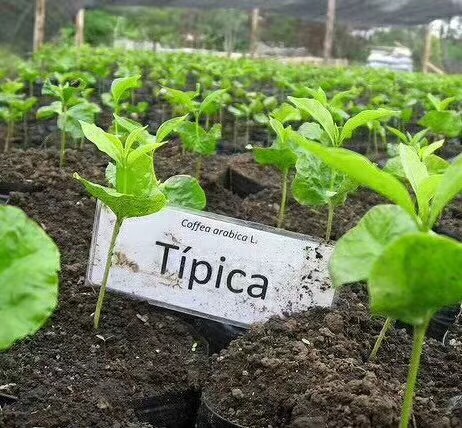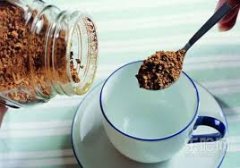Introduction to the "micro mill" Coffee Revolution in Costa Rica
For professional baristas, please follow the coffee workshop (Wechat official account cafe_style)

Treatment of Yellow Honey on Pena Farm in Tara Zupena, Costa Rica
Costa Rica is the most stable and best coffee in Central America, coffee production has a very long history, as early as the 19th century 1800 coffee has been exported to the United Kingdom. In 1880, the concept of fine coffee had not yet been formed, and many high-altitude high-quality coffee (SHB) mixed with flat coffee were not particularly singled out. Due to long and narrow terrain factors resulting in great differences in latitude, altitude, soil, rainfall, temperature and other natural conditions gave rise to a wealth of coffee varieties, but in Costa Rica Robusta varieties are prohibited by law, only Arabica varieties are allowed. Common are Caturra Kaddura, Catuai Kaduai, Villa sarchi, Ceisha, Bourbon bourbon, Villalobos. The most common way of handling coffee beans in Central American countries is washing, but there are more and more countries with sun-dried beans and Miel Process, which is the most popular in recent years. This trend began in Costa Rica.
Now Costa Rica has responded to the needs of foreign coffee buyers and developed the coffee revolution of "micro mill". The main spirit of micro mill is that every small farm in Costa Rica can have its own micro-processing system, so that it can be received and processed from the coffee and bagged by the farm itself. Farms can dispose of their own coffee beans in the simplest, fastest and cheapest way, so that the coffee is of the best quality and the farm is more profitable, but it also means that small farms are responsible for the coffee they produce and handle.
In Costa Rica, honey treatment and sun-dried beans are derived from small farms with certain difficulties. Pena Pena Farm is located in the Tarazu Valley, about 70 kilometers southwest of San Jose, the capital of Costa Rica. This is a paradise area with rich green vegetation and clear rivers. Coffee beans are harvested once a year, and the harvest begins in December and lasts until March of the following year, with an average annual rainfall of 2900 mm and an average temperature of 18 degrees Celsius.

Property Characteristics: farm characteristics
Farm Farm name: La Pena
Farmer Farm owner: Santa Cruz
Region producing area: Tarrazu Valley Tarazhu
Country country: Costa Rica
Altitude altitude: 1650-1700m
Coffee Characteristics: coffee characteristics
Variety varieties: Caturra, Bourbon, Typica Kadura Bourbon Tibica
Processing System treatment: Honey honey treatment
Harvest time: End of November-March November to March of the following year
Top Jury Descriptions judge's comment: the baking degree measured by the cup for 60 seconds at the beginning of the first explosion (Cinnamon)
Aroma aroma / flavor flavor: clove, peanut, cinnamon, black tea, basil, peach, maple syrup, caramel
Sour: Apple, blueberry, yellow lime, acid with ester slippery taste
Complex complexity and other other: spice dry aroma is great, simple and clean little change, velvety taste, peach and apple sweet
Overall style attributes: very smooth, sweet peaches, flavor of the new century

Cup test date: 2013.11.26
Dry aroma: 10
Wet aroma: 9
Clean: 9
Sweetness: 9
Acid quality: 8
Palate: 9
Flavor: 8
Yu Yun: 9
Balance: 9
Overall: 9
Cup test score: 89
Important Notice :
前街咖啡 FrontStreet Coffee has moved to new addredd:
FrontStreet Coffee Address: 315,Donghua East Road,GuangZhou
Tel:020 38364473
- Prev

Is instant coffee safe? Understand the composition table of instant coffee
Communication of professional baristas Please pay attention to the coffee workshop (Wechat official account cafe_style) is your coffee safe? Three-in-one, two-in-one, bottled and canned coffee are the products of today's fast food culture. Think carefully that we are buying convenient caffeine instead of coffee. Instant coffee can only be said to be a coffee-flavored drink, and experts even call it chemical coffee. just like
- Next

Coffee healthy drinking method to choose the right type of coffee
Professional barista communication Please pay attention to coffee workshop (Weixin Official Accounts cafe_style ) Is your coffee safe? 3-in-1 and bottled and canned coffee are products of the instant culture, and think about it when we buy convenience caffeine instead of coffee. Instant coffee can only be said to be coffee-flavored (pigment) drinks, experts even call them chemical coffee. like
Related
- Beginners will see the "Coffee pull flower" guide!
- What is the difference between ice blog purified milk and ordinary milk coffee?
- Why is the Philippines the largest producer of crops in Liberia?
- For coffee extraction, should the fine powder be retained?
- How does extracted espresso fill pressed powder? How much strength does it take to press the powder?
- How to make jasmine cold extract coffee? Is the jasmine + latte good?
- Will this little toy really make the coffee taste better? How does Lily Drip affect coffee extraction?
- Will the action of slapping the filter cup also affect coffee extraction?
- What's the difference between powder-to-water ratio and powder-to-liquid ratio?
- What is the Ethiopian local species? What does it have to do with Heirloom native species?

